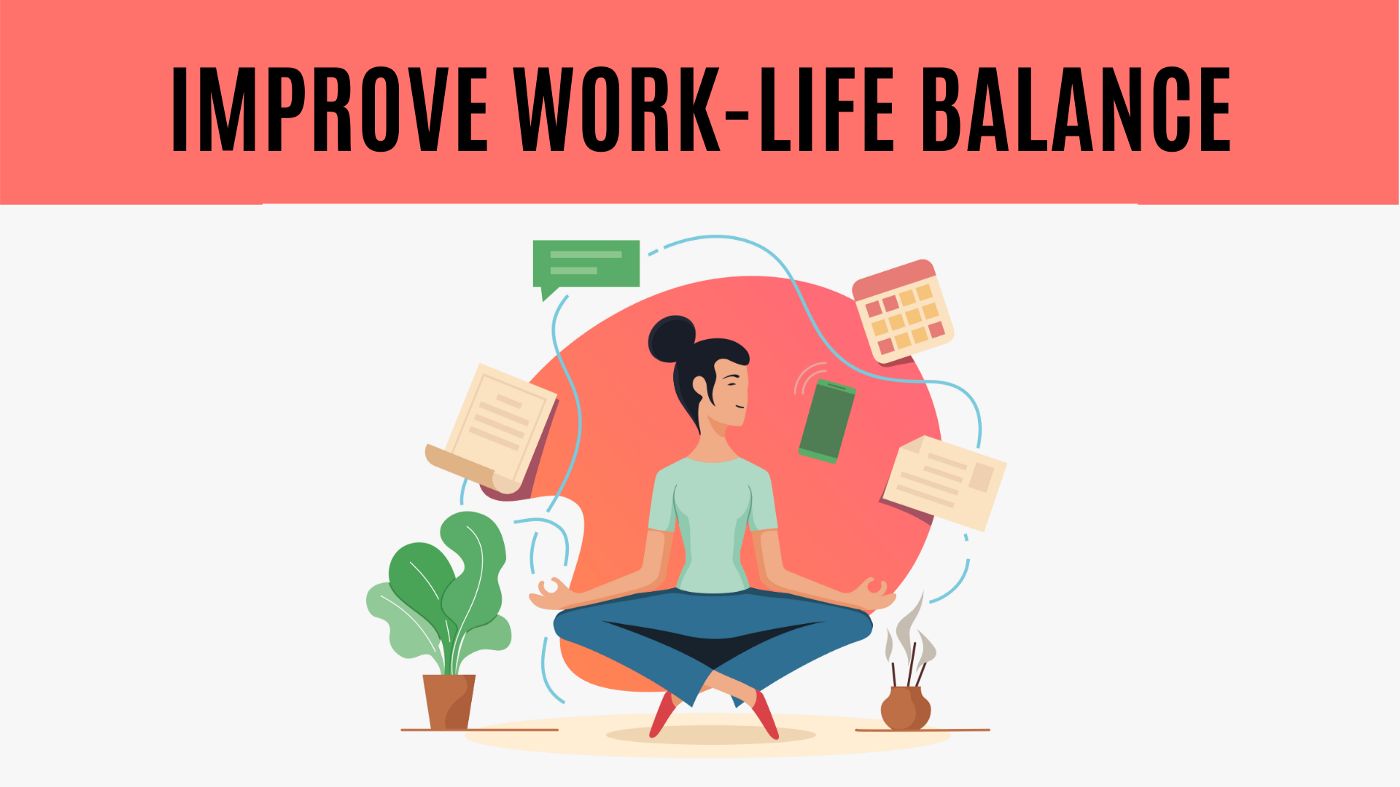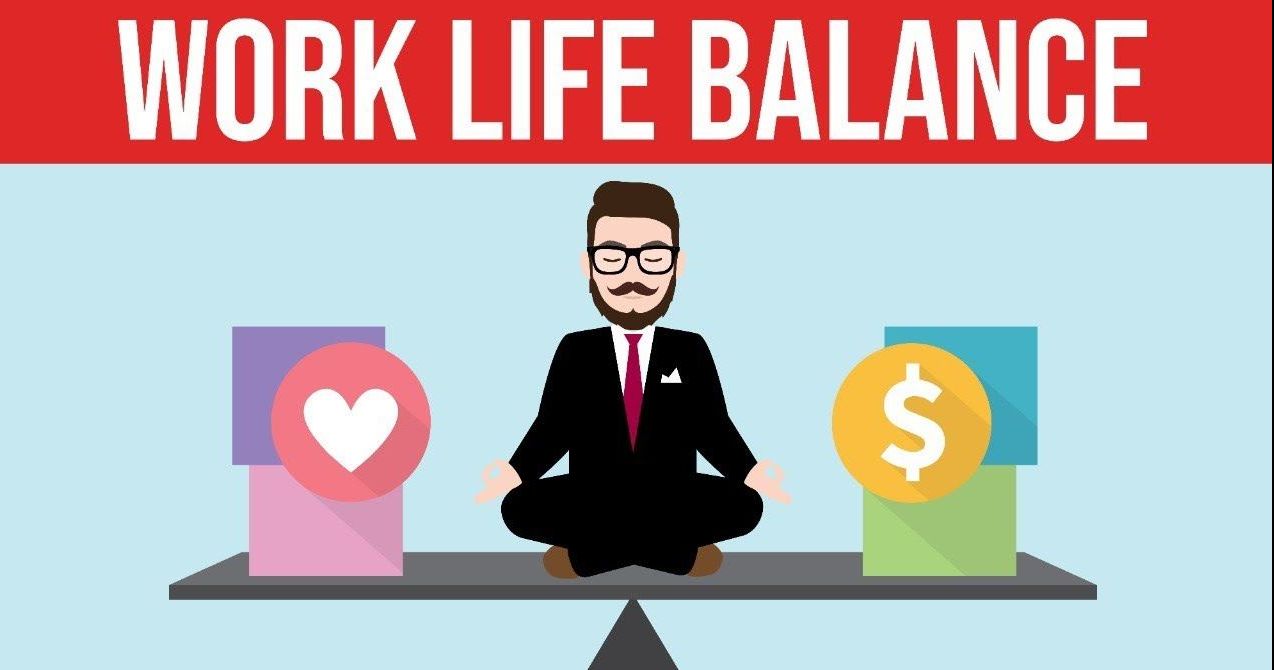At some point, everyone gets tired of the endless work tasks and career races. When it takes up all the time, a resource quickly runs out, and the rest fades into the background. In this article, you will learn about the work-life balance approach and how to arrive at it.
Many people get this balance wrong, thinking it's only about rest. For example, you can run bollywood-casino.com while at work and put off necessary business. It is not the case. It would help if you got your work timing and priorities right.
What does work-life balance mean?
The work-life balance began to be discussed in the United States in the 1970s through Rosabeth Moss Kanter's book Work and Family in the United States. At first, compensation referred only to pregnant women and mothers, but that changed as career goals grew. Employees began to overwork frequently, shifting the focus to careers. Consequently, burnout at work increased, and productivity fell accordingly.
The word combination work-life-balance in many people pictures an ideal picture in which you have time for everything. And work tasks to close, English classes, and even spending time with the family. As if if if you find this balance, it will work as a magic pill. Of course, this is not the case. Yes, and it's hard to imagine a person whose personal life and career do not affect each other. Everyone feels tired sometimes, overworked, and sits on social networks during working hours.
The main point is to manage your time and strive for balance in all areas. In a world of information overload, it is essential not to close your laptop in time but to focus on your life. At the same time, work and the personal sphere should complement each other, not compete. An excellent example of this approach is the company Slack, whose principle is simple: "Work hard and go home.
Urgent work tasks can keep you late, but it shouldn't become a habit. So instead, the idea is to switch to personal duties at home despite the hectic schedules and overworked colleagues.
Work-life-balance and remote work
Since the pandemic's beginning, the perception of work time has changed. Many have completely moved their office home, and keeping a balance has proven difficult. To see if this is the case, SuperJob conducted a study. It involved 3,000 professionals of various professions, working on a standard schedule in the office and remotely. Of those surveyed, 48% said they find a balance between their personal lives and work. At the same time, the higher the income level, the more attention is paid to work tasks. And among the most successful time managers are lawyers (58%), accountants (54%), and economists (53%).
But those who work from home are more loyal to overtime: every fifth office worker finishes on time, and among telecommuters, only 12% follow this rule. At the same time, the attitude to overwork among the two groups is almost identical: 40% of office workers and 34% of remote workers believe it is unacceptable to be regularly delayed.
Who is responsible?
As is customary, an employee would rather blame the company than himself for excessive stress and overwork. High workload, endless tasks, and colleagues who do not understand. But it is not all so unequivocal. Even with the most loyal manager, it is easy to fall into overload mode.
It may seem that you can not do otherwise and are forced to overwork, but is it so? Most likely, you're afraid to say no, or you're just so used to it.
Well, how you switch from work and how much you put into it is up to you. We don't remove all the time to work during the work day. According to a Headhunter survey, 24% of remote employees spend 81%-90% of their time at work. The rest goes on conversations with colleagues, social networks, and news reading. Tasks multiply, they have to be done late at night and the working day increases to 12 hours.
But the company has another responsibility - to create comfortable conditions and perceive employees as valuable resources, not robots. This approach began with IT companies, and gradually yoga in the office, a psychologist, and a flexible workday became the norm.
Why the balance
It would seem that the answer lies on the surface. If you distribute time correctly, you have time to deal with all areas of life. But besides this, balance preserves physical and mental health. When behind the work tasks, there is no light, sooner or later, the body will fail, and the quality of work will not be exceptionally high. Over time, stress turns into emotional burnout and becomes chronic, which can lead to depression and health problems.
Many people in non-stop work mode have no idea how they can still engage in self-development, sports, and family. In this case, work-life balance frees up energy that has been entirely devoted to working tasks.
Finally, work-life balance helps you see new sides to yourself. Don't have a favorite hobby or have been planning to improve your financial literacy for a long time? The free time can be gladly spent on yourself and what you have been putting off for months. That's the great thing about life balance - taking the time to do what matters. When life is filled with exciting hobbies, meetings with friends, and quiet walks, there is even more resource for productive work.
A few steps to maintain a work-life balance
Prioritize
Work-life balance does not require dividing your work and personal time strictly equally. Start by asking questions like:
- Is everything in my life going as it should?
- Where is my energy going, and what area is it missing?
- Am I enjoying it?
Even if recycling is a conscious choice, you must understand how you feel about this workload.

Make a life balance wheel.
This tool will allow you to see the lagging areas of your life visually.
- Take a piece of paper and draw a large circle.
- Divide it into eight parts.
- Above each, write a name: career, finances, relationships/family, hobbies, health, friends, self-development, spiritual growth.
- Mark each sector with a score from 1 to 10.
- Rate each area and then connect the circle.
You won't be able to align the wheel at once - act gradually. To do this, choose 1-2 spheres you want to tighten. Then, write out a small plan and start making time for them.
Reconsider the organization of time
Everyone needs a shake-up and new patterns from time to time. Often tasks pile up because you keep them in your head or jump from one to the next. It's impossible to get everything done, so focus on the critical priority tasks and try to delegate the smaller ones. Also, pay attention to productivity time - everyone has his own time. And don't forget about notes and mobile apps.
Make a schedule.
To shift the focus away from work, you need to fill your time with other things to do. So every day, occupy your time outside work with something new: dinner with family, meeting with friends, hobbies, and put everything on your calendar. That way, your motivation to finish work on time will be higher.
A plan without fanaticism.
In a perfect picture, the day starts with checking email and ends with a leisurely conversation with colleagues. But even time management gurus can't plan for everything, so leave room for force majeure. Leave work early if you were late yesterday, or reconsider your breaks during the day. Don't strive for a perfect schedule; choose a realistic one. And remember that balance is achieved gradually.

